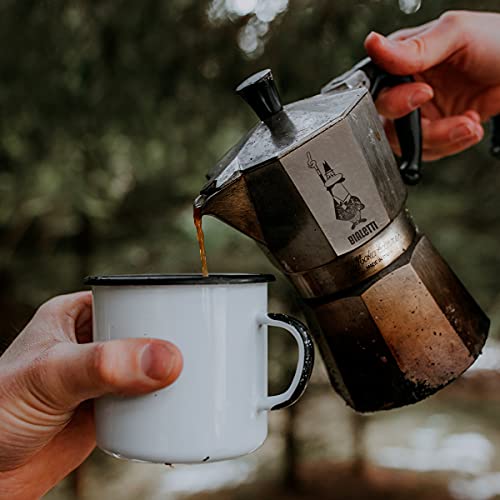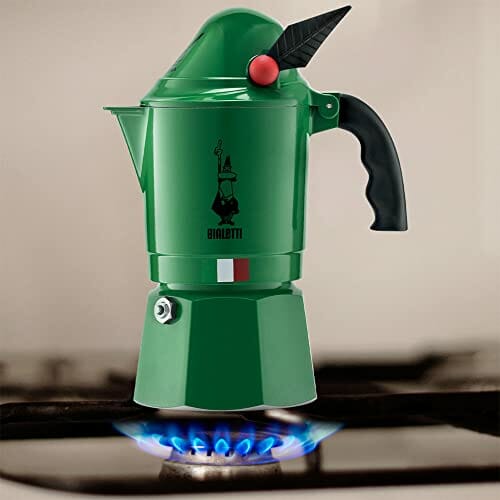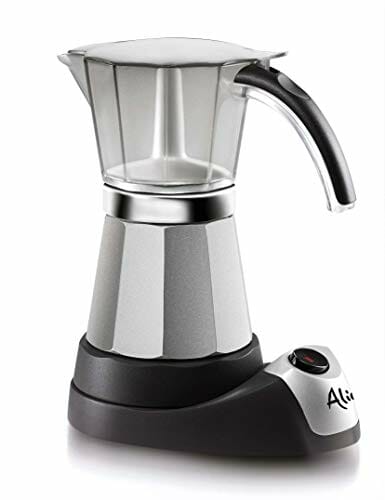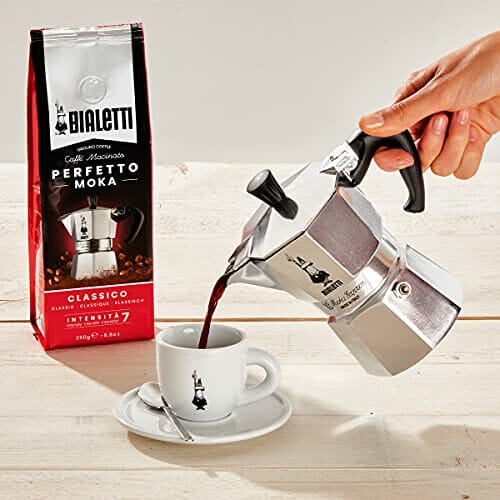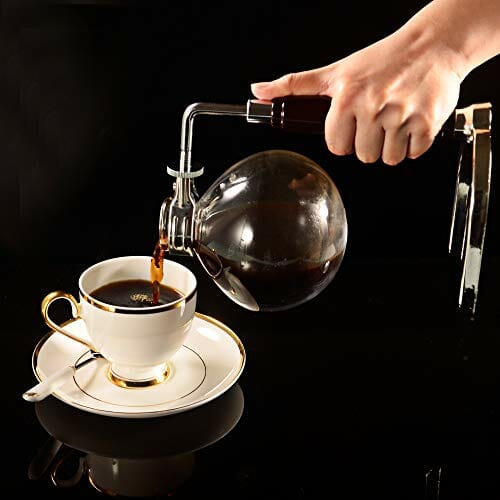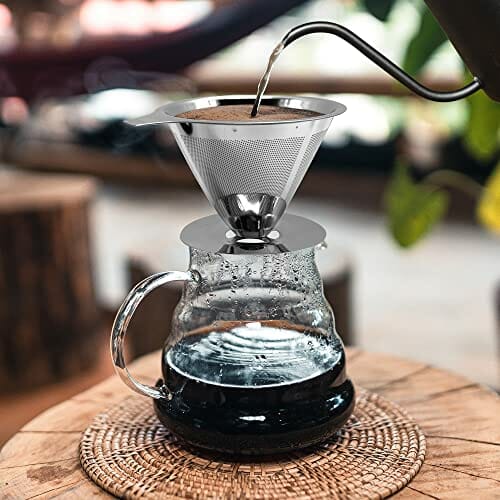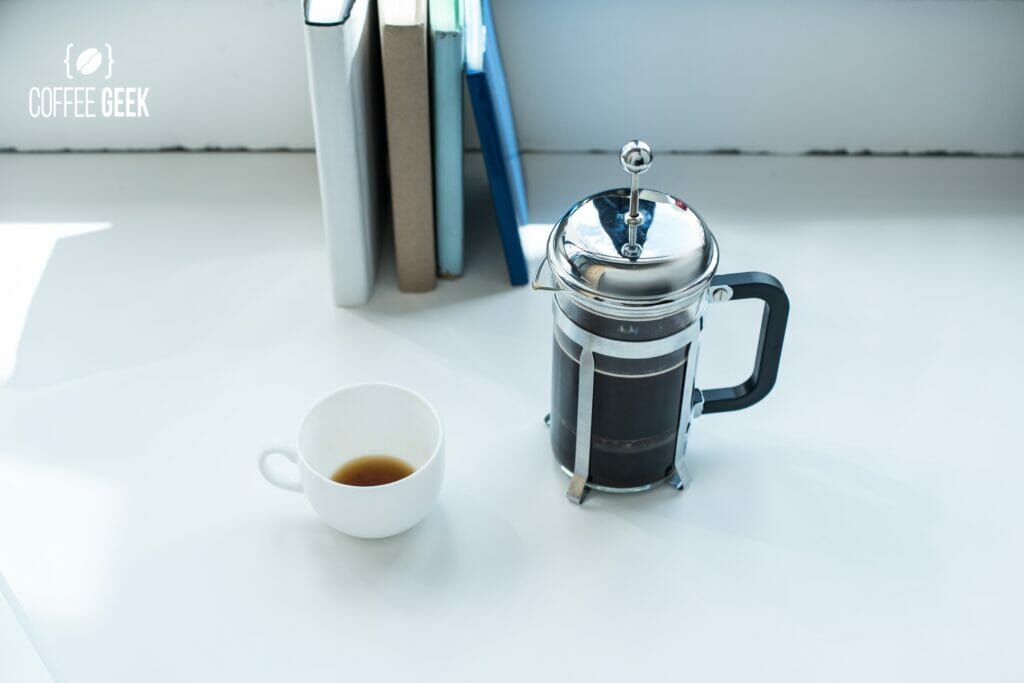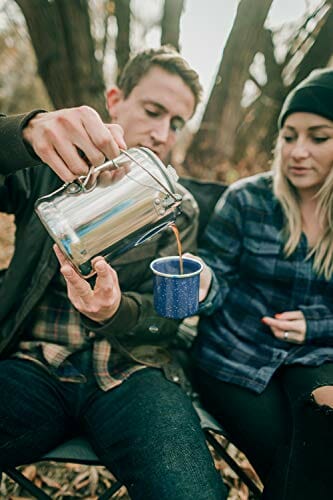Have you ever brewed your coffee using percolators? Are you interested in this design that’s still popular even after many years?
If you like hot and strong coffee, you could be a percolator fan. So how does a coffee percolator work? Let’s go over the basics. I am betting that you will be intrigued enough to try it!
What is a coffee percolator?
To understand how a coffee percolator works and how you can ensure the highest quality taste in your coffee. You must first understand what a coffee percolator is.
In the most basic terms, the definition of a coffee percolator is a device utilized to make coffee. The process it uses is a constant cycling of the boiling brew using ground coffee until the desired level of strength and consistency is achieved.
‘Percolate‘ is the term used to describe the process of filtering a substance or liquid via an area with a porous surface inside the device.
The entire percolation process is built on three components kettle, hot water, and coffee beans.
Types of Coffee Percolators
Coffee percolators are typically more like the old-fashioned coffee makers you’ve seen many times. They are usually made out of a chamber, pot, and tube. There is an additional section that houses coffee beans.
The principle mechanism for any coffee percolator remains the same. Pour hot water into the pot, and the central tube allows it to go through the upper part. That’s it.
Coffee percolators are typically classified into two types:
- Pressure Percolator
- Gravity Percolator
Pressure Percolator
A pressure percolator acts as the mechanism used by a Moka pot.
Steam can flow through the central chamber, which forces the water to flow through the grounds.
Gravity Percolator
The majority of coffee percolators are gravity-based. These machines are equipped with a mechanism that involves water boiling in the central tube. It then is sucked down by the grinds with nothing more than gravity force.
Further Classification of Coffee Percolator
This is the further classification of coffee percolator:
- Electric Percolator
- Moka Brewing
- Stovetop Percolator
- Filter Drip Brewing
- Siphon Brewer
Electric Percolator
Modern coffee machines, which you can see everywhere, are classified as electric percolators.
They can make multiple cups of coffee by using motors, boilers, and other sources of heat, and they run using electricity.
A combination of all these parts will efficiently provide your office, home, and commercial needs for coffee.
Stovetop Percolator
They are the standard, more traditional percolators for coffee that coffee lovers worldwide use.
The fundamental operation mechanism for stovetop percolator is through the passage of hot water through the ground coffee, which leads to extraction.
Through this method, the result is a dense espresso inside the chamber. This makes stronger and bitter coffee perfect for those who appreciate the bitterness and the intense aroma of coffee.
Moka Brewing
Moka Pot is used for Moka coffee, and the brewing mechanism is based on heated water vapor that is released from the base of the coffee machine and then takes coffee in it.
A pressure chamber in which the water evaporates from the bottom until it finally gives you an intense and full-bodied cup of coffee with a bitter taste.
Siphon Brewer
Siphon brewer is a mixture of infusion and percolation. The procedure for this kind of coffee percolator relies on steam directing hot water into the coffee’s stem grounds, allowing it to mix with the ground coffee.
The water vapor then rises up in the chamber before cooling down, giving you a rich and full-bodied cup of coffee that has just the right scent.
Filter Drip Brewing
It is a more uncommon type of coffee percolator. The filter drip brewing method is when the water doesn’t require any boiling to rise the brew chamber.
Instead, a filter blocks ground coffee from passing through the filter, and gravity takes over for the final part.
How does a coffee percolator work?
Percolators hold the water in the lower chamber to hold the water and the ground coffee beans in a basket at the upper side.
When the water is heated, it moves through a vertical tube that goes over the ground coffee before flowing back into the pot’s bottom.
Contrary to other methods of brewing coffee, percolator coffee is brewed repeatedly. Each time the now-flavored water falls down, it is run through those grounds to make a highly fragrant cup of coffee.
Unfortunately, it’s very easy to over-brew coffee with percolators. With pour-over and drip coffee brewing methods, only one can move water through coffee grounds, making it simple to regulate the taste.
As with French press coffees, I suggest having a timer in place to control the quality and strength of coffee.
FAQS
Does a percolator make better coffee?
Percolators aren’t guaranteed to make better or worse coffee. However, they can make a distinct brew. But, it’s important to remember that this technique often yields especially dark coffee that most people prefer.
If you like lighter coffee, you are welcome to play around and increase the ratio of water to coffee.
How does a coffee percolator know when to stop percolating?
In an electric coffee percolator, the recirculated water gets hotter as time passes. Once it reaches a specific temperature, the percolator shuts down or switches to keep it warm. The percolator is programmed to do so.
How do you know when a coffee percolator is done?
You’ll be able to tell that percolation is beginning when you hear a sputtering sound. Percolators use pressure to push the hot liquid through a verticle tube to slowly soak into the ground coffee.
Be aware of the temperature of the water. If you notice that your coffee is beginning to explode from the top, reduce the heat.
If the process seems to be slow, turn it up. The indication of process completion is when you stop hearing the sputtering sound.
Do you need a coffee filter for a percolator?
One of the best advantages of an electronic or glass coffee percolator is that you do not have to purchase traditional filters because the perforated basket of the device can serve the same purpose. It allows the water to drip down the tube without letting coffee beans fall into the pot.
What is the best coffee for a percolator?
The coffee beans you pick make a considerable difference for percolator coffee. Since the coffee is brewed multiple times, dark roasts could be overwhelming.
Choose a coffee with a low acidity classified as light-roast, smooth or mild. It’s also crucial to grind the beans coarsely to avoid falling out of the basket and getting into the coffee.
How much coffee do you put in a percolator?
After a couple of brews, you will know how much coffee is needed to make percolator coffee.
I suggest you use one tablespoon of coarsely ground coffee for each cup of water to create a strong cup of joe.
Whereas for a lighter cup of coffee, I suggest you use a teaspoon per cup.
How long do you let coffee percolate in a percolator?
This is where the difficulty lies. However, you will learn it after doing it a couple of times. Even when you’re new to this, you can prepare an excellent cup of coffee with percolators.
According to the majority of coffee experts, when you start to see bubbles, this is where you must establish your timer for the next time.
In the beginning, you could start at the time of ten minutes. This will provide a rich taste to your coffee. If you feel that the coffee is too mild or light, you can increase the timer for your next brew.
Conclusion
Using a product that has little to no automation involved in the entire process might not be ideal; however, after using a coffee percolator, you will know the bold flavor and aroma of coffee it gives.
If you like your beverage to impart a bitter taste, you must try the coffee made using percolators.

![How Does a Coffee Percolator Work: [Explained] 2 How Does a Coffee Percolator Work](https://coffeegeek.tv/wp-content/uploads/2022/01/How-Does-a-Coffee-Percolator-Work-1-1024x536.jpg)
